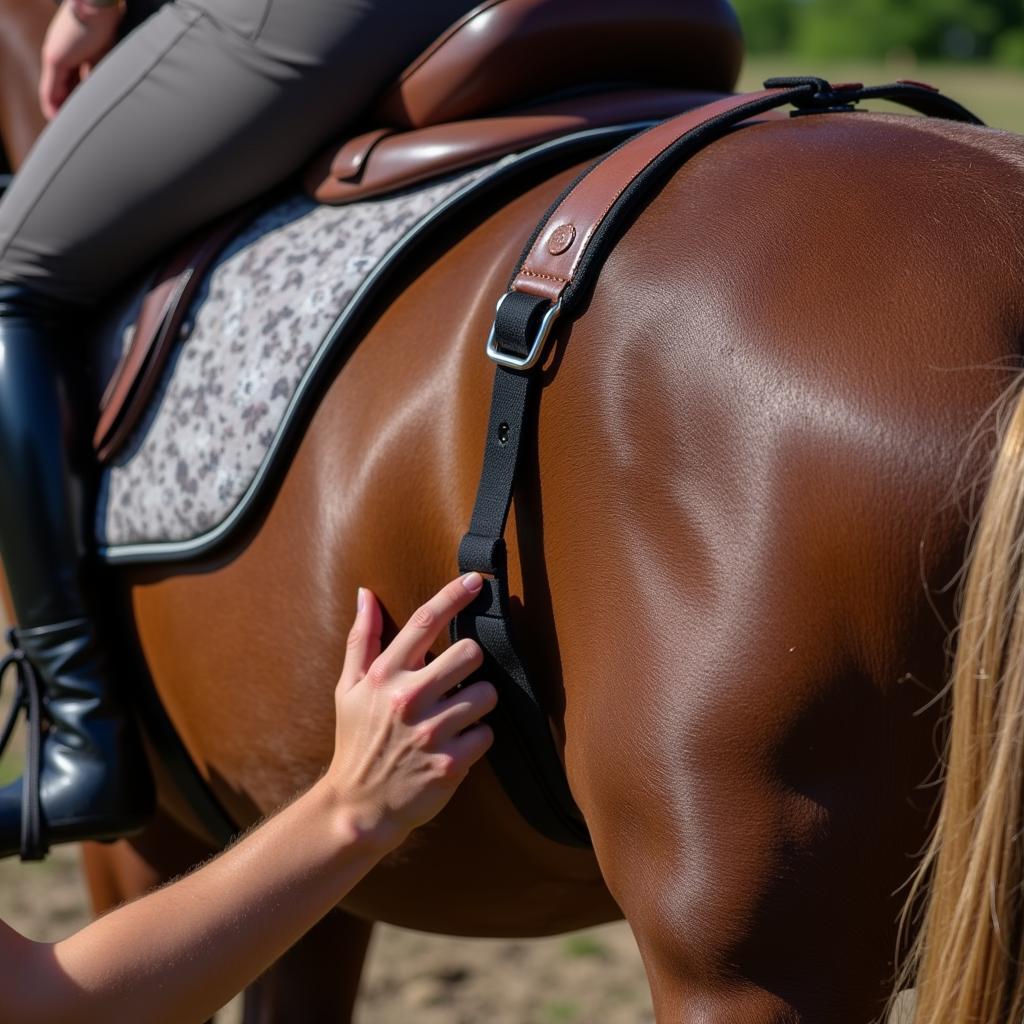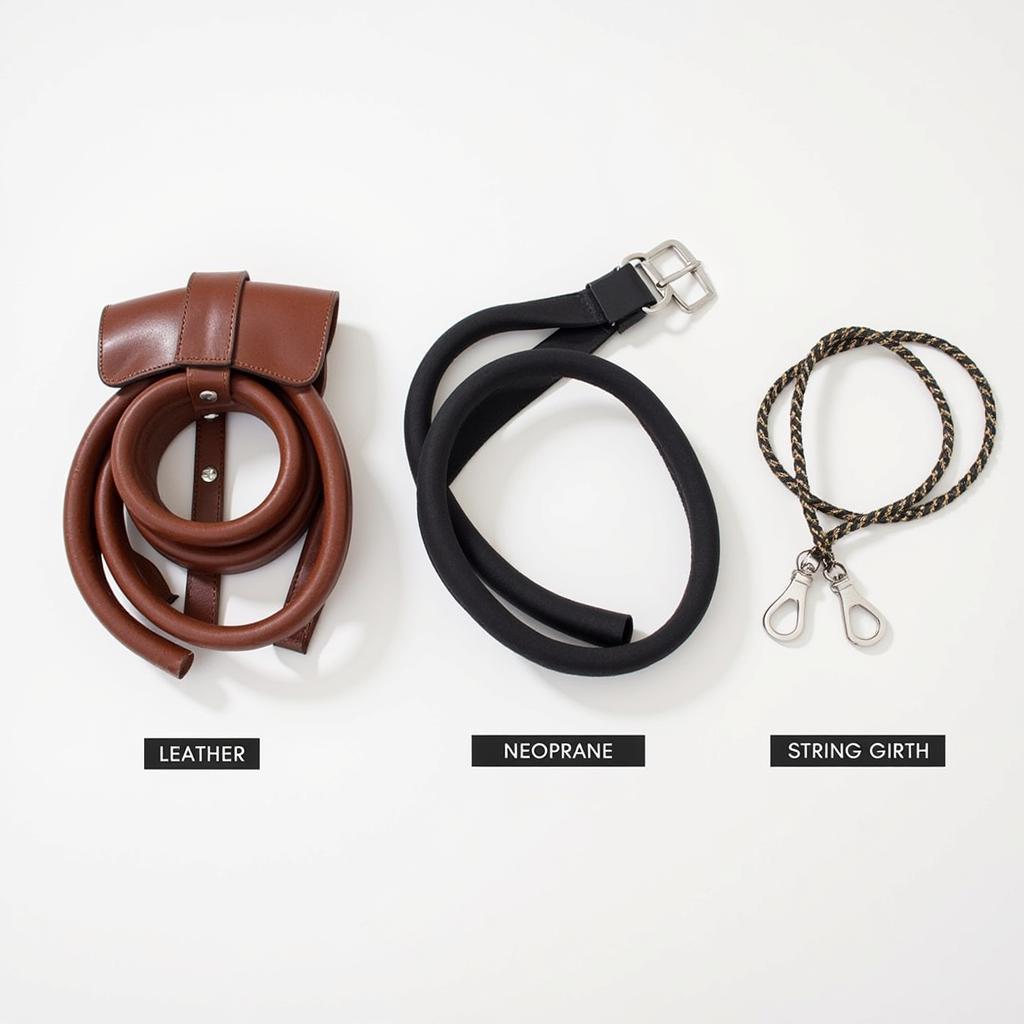A Cinchy Horse can be a real headache for riders. Understanding why your horse is cinchy is the first step to resolving the issue and creating a more comfortable and safer riding experience. This article dives deep into the causes, solutions, and preventative measures for dealing with a cinchy horse.
What Makes a Horse Cinchy?
Horses can become cinchy for a variety of reasons, and pinpointing the exact cause is crucial for effective management. Some common culprits include poorly fitting tack, underlying pain or discomfort, previous negative experiences with girthing, and even learned behavior. It’s important to rule out any physical issues before addressing behavioral causes.
 Horse exhibiting signs of discomfort during girthing, possibly due to being cinchy
Horse exhibiting signs of discomfort during girthing, possibly due to being cinchy
A horse that’s cinchy might exhibit a range of behaviors, from pinning their ears and tensing their muscles to more extreme reactions like biting, kicking, or rearing. These are all clear signs that something isn’t right and should never be ignored. Addressing the issue promptly can prevent the behavior from escalating and preserve the horse-rider relationship.
Tack Fit and the Cinchy Horse
Ill-fitting tack, especially the girth, is a frequent contributor to cinchy behavior. A girth that’s too narrow can pinch and cause discomfort, while a girth that’s too wide can chafe and rub. The material of the girth also plays a role. Leather girths can be more comfortable for some horses, while others prefer synthetic materials.
 Different types of horse girths, including leather and synthetic options, for addressing cinchy behavior
Different types of horse girths, including leather and synthetic options, for addressing cinchy behavior
Pain and Discomfort: A Hidden Cause of Cinchy Behavior
Sometimes, a cinchy horse is trying to tell us they’re in pain. Underlying medical conditions like ulcers, back pain, or rib injuries can make girthing uncomfortable. It’s crucial to consult with a veterinarian to rule out any physical issues before attempting behavioral modification techniques.
Addressing Cinchy Behavior: A Step-by-Step Approach
Desensitization and counter-conditioning are effective methods for addressing cinchy behavior caused by learned responses. This involves gradually introducing the girth to the horse and rewarding calm behavior. Patience and consistency are key to success.
- Start Slow: Begin by simply touching the horse’s girth area with your hand. Reward any relaxed behavior with a kind word or a small treat.
- Introduce the Girth: Gradually introduce the girth, allowing the horse to sniff and investigate it.
- Gradual Tightening: Slowly tighten the girth, a little at a time, over multiple sessions. Never rush the process.
- Positive Reinforcement: Reward calm and accepting behavior with praise and treats.
Preventing Cinchy Behavior in Horses
Prevention is always better than cure. Ensuring proper tack fit, addressing underlying pain, and handling horses gently during girthing can help prevent cinchy behavior from developing in the first place.
 Demonstration of the correct technique for tightening a horse's girth to avoid discomfort and cinchy behavior
Demonstration of the correct technique for tightening a horse's girth to avoid discomfort and cinchy behavior
Conclusion
Dealing with a cinchy horse requires patience, understanding, and a commitment to finding the root cause of the problem. By addressing both physical and behavioral factors, we can create a more comfortable and enjoyable riding experience for both horse and rider. Remember to prioritize your horse’s well-being and seek professional advice when needed. A cinchy horse can be rehabilitated with the right approach.
FAQs
- Can a change in diet help a cinchy horse? While diet doesn’t directly affect cinchy behavior, addressing underlying health issues like ulcers through dietary changes can improve overall comfort.
- Is it ever okay to ignore cinchy behavior? No, ignoring cinchy behavior can exacerbate the problem and potentially lead to dangerous reactions.
- How long does it take to desensitize a cinchy horse? The time required varies depending on the individual horse and the severity of the behavior.
- What type of girth is best for a cinchy horse? There’s no one-size-fits-all answer. Experimenting with different materials and styles can help determine what’s most comfortable for your horse.
- When should I involve a veterinarian? If you suspect underlying pain or discomfort, consult a veterinarian immediately.
- Can training techniques alone resolve cinchy behavior? Training is essential, but addressing any physical discomfort is equally crucial for long-term success.
- Are certain breeds more prone to being cinchy? While some breeds might be more sensitive, cinchy behavior can occur in any horse.
For further assistance, please contact us at Phone: 0772127271, Email: [email protected], or visit us at QGM2+WX2, Vị Trung, Vị Thuỷ, Hậu Giang, Vietnam. Our customer service team is available 24/7. We also have articles about horse tack and horse behavior.